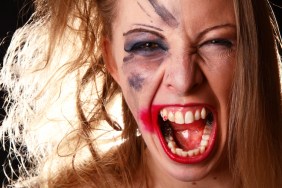Photo: Ai Weiwei, At the Museum of Modern Art, 1987, from the New York Photographs series 1983–93, collection of Ai Weiwei, © Ai Weiwei; Andy Warhol artwork © The Andy Warhol Foundation for the Visual Arts, Inc.
In 1983, Chinese artist and activist Ai Weiwei arrived in New York City. He was 26 years old. He lived in a studio apartment on East 3 Street for a decade, inhabiting a place and time unlike any other before or since, a period where political unrest boiled came to a head during the summer of 1988 with the Tompkins Square Park riot. But Ai was no stranger to government oppression, his father the Chinese poet Ai Qing, who was denounced during the Anti-Rightist Movement in the late 1950s. When the young Ai was just one year old, the family was relocated to a labor camp in the northernmost province of the country, where they lived for the next 16 years until the death of Mao Zedong in 1976.
Also: Exhibit | Ai Weiwei: Circle of Animals / Zodiac Heads
While in New York, Ai made the scene, using his home as a crash pad for Chinese artists, musicians, and friends who passed through New York while developing friendships with luminaries including poet, Allen Ginsberg. He also spent time taking photographs, creating a visual diary of his life in the United States. Among the photographs taken during this time is one taken in 1987, titled At the Museum of Modern Art, where the artist stands in front of a self-portrait of Andy Warhol, mimicking the pose. It’s comfortable, casual connection, one that makes clear Ai’s affinity for the Pop icon who would die that year.

Andy Warhol, Mao, 1972, The Andy Warhol Museum, Pittsburgh, © The Andy Warhol Foundation for the Visual Arts, Inc.
The photograph is including in a new exhibition, Andy Warhol | Ai Weiwei, now on view at The Andy Warhol Museum, Pittsburgh, through September 11, 2016. The exhibition presents 350 works in drawing, film, new media, photography, painting, sculpture, wallpapers, and publishing displayed throughout the seven floors of the building, creating a dynamic dialogue between the artists that speaks to the power and impact of their art.
Director Eric Shiner said, “This project is perhaps the most important exhibition The Warhol has ever taken on. No two artists changed—or in the case of Ai Weiwei, is changing—the very fabric of his time and place more than Andy Warhol and Ai Weiwei. Both artists call into question what art can and should be, and both overcame nearly invincible odds to rise to the top of the art world thanks to their creative rebellion.”

Ai Weiwei, Mao (facing forward), 1986, private collection, image courtesy Ai Weiwei studio, © Ai Weiwei
Taken together, the works of Andy Warhol and Ai Weiwei bridge the divide between East and West, old and new, modern and postmodern into a compelling study of contemporary art. Together then encompass a great swath of subjects, practices, and styles, speaking to their need to explore ideas visually in countless forms, discovering new ways of describing the beauty, triumph, and horror of life. As artists they are not simply craftsmen but philosophers.
“I think art is a very important weapon to achieve human freedom,” Ai observes, reminding us of the power great minds can bestow upon those who hold liberation as both an ideal and a goal.

Andy Warhol, Flowers, 1970, The Andy Warhol Museum, Pittsburgh, © The Andy Warhol Foundation for the Visual Arts, Inc.
In conjunction with Andy Warhol | Ai Weiwei at The Warhol, Ai’s Circle of Animals / Zodiac Heads (2011) is on display at Carnegie Museum of Art in the Hall of Architecture May 28–August 29, 2016.
Miss Rosen is a New York-based writer, curator, and brand strategist. There is nothing she adores so much as photography and books. A small part of her wishes she had a proper library, like in the game of Clue. Then she could blaze and write soliloquies to her in and out of print loves.






